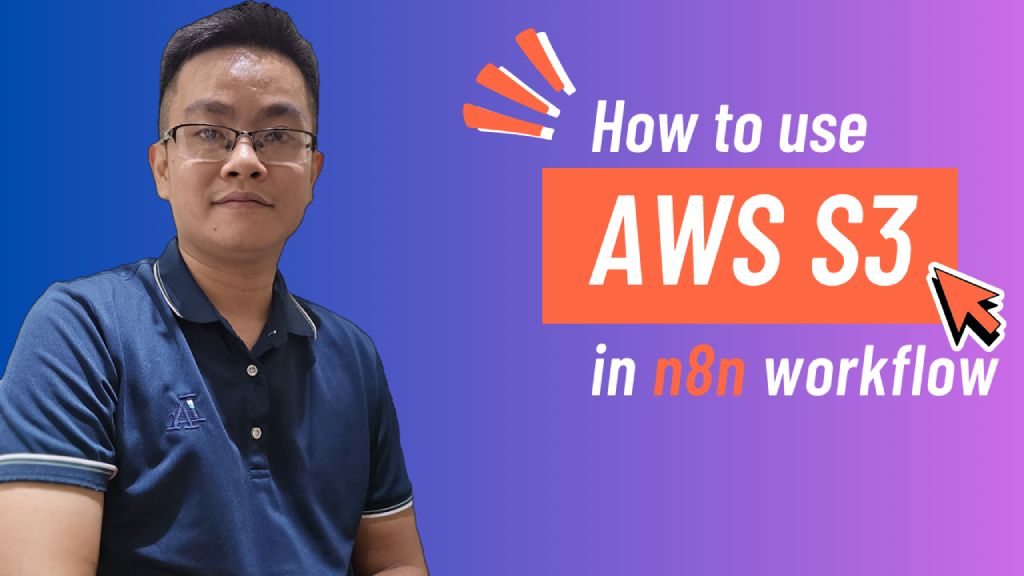Back to Templates
Automating AWS S3 Operations with n8n: Buckets, Folders, and Files
Watch the demo video below:

This tutorial walks you through setting up an automated workflow that generates AI-powered images from prompts and securely stores them in AWS S3. It leverages the new AI Tool Node and OpenAI models for prompt-to-image generation.
Who’s it for
This workflow is ideal for:
- Designers & marketers who need quick, on-demand AI-generated visuals.
- Developers & automation builders exploring AI-driven workflows integrated with cloud storage.
- Educators or trainers creating tutorials or exercises on AI image generation.
- Businesses looking to automate image content pipelines with AWS S3 storage.
How it works / What it does
- Trigger: The workflow starts manually when you click “Execute Workflow”.
- Edit Fields: You can provide input fields such as image description, resolution, or naming convention.
- Create AWS S3 Bucket: Automatically creates a new S3 bucket if it doesn’t exist.
- Create a Folder: Inside the bucket, a folder is created to organize generated images.
- Prompt Generation Agent: An AI agent generates or refines the image prompt using the OpenAI Chat Model.
- Generate an Image: The refined prompt is used to generate an image using AI.
- Upload File to S3: The generated image is uploaded to the AWS S3 bucket for secure storage.
This workflow showcases how to combine AI + Cloud Storage seamlessly in an automated pipeline.
How to set up
- Import the workflow into n8n.
- Configure the following credentials:
- AWS S3 (Access Key, Secret Key, Region).
- OpenAI API Key (for Chat + Image models).
- Update the Edit Fields node with your preferred input fields (e.g., image size, description).
- Execute the workflow and test by entering a sample image prompt (e.g., “Futuristic city skyline in watercolor style”).
- Check your AWS S3 bucket to verify the uploaded image.
Requirements
- n8n (latest version with AI Tool Node support).
- AWS account with S3 permissions to create buckets and upload files.
- OpenAI API key (for prompt refinement and image generation).
- Basic familiarity with AWS S3 structure (buckets, folders, objects).
How to customize the workflow
- Custom Buckets: Replace the auto-create step with an existing S3 bucket.
- Image Variations: Generate multiple image variations per prompt by looping the image generation step.
- File Naming: Adjust file naming conventions (e.g., timestamp, user input).
- Metadata: Add metadata such as tags, categories, or owner info when uploading to S3.
- Alternative Storage: Swap AWS S3 with Google Cloud Storage, Azure Blob, or Dropbox.
- Trigger Options: Replace manual trigger with Webhook, Form Submission, or Scheduler for automation.
✅ This workflow is a hands-on example of how to combine AI prompt engineering, image generation, and cloud storage automation into a single streamlined process.